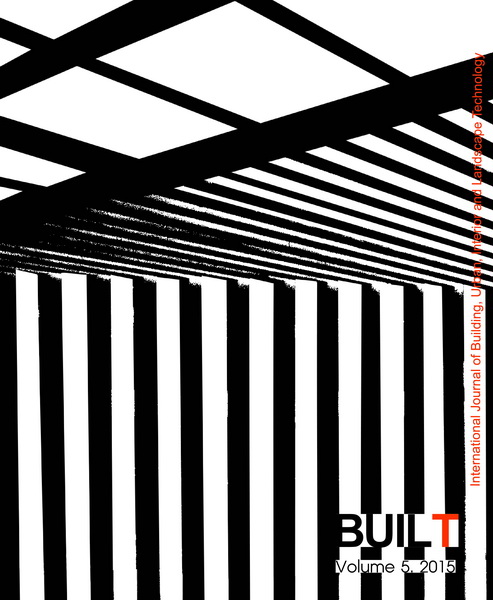The Evaluation Methodology of Ecological Construction of Gully Villages on Loess Plateau: The Case Study of Chang Wu County, Shaanxi Province, China
Keywords:
Loess Plateau, Gully Village, Human Settlements, Suitability, SensitivityAbstract
Gully regions of Loess Plateau, one of the earliest human settlement areas and one of the most fragile ecological areas in China, are facing challenges for future development. As the smallest social units on Loess Plateau, gully villages own large amount of agriculturalpopulation. However, due to unreasonable development planning and the loss of developing directions, gully villages are gradually disappearing. Based on the practical investigation of Gansu and Shaanxi province in China, this paper is focused on the main influential factors for the development of gully villages, and establishes a quantitative evaluating method for ecological construction. Furthermore, this paper takes typical villages in Chang Wu County, Shaanxi province, China, as study objects, selects and classifies evaluation factors, and completes the quantitative evaluation on the suitability and sensitivity of ecological construction based on relative evaluation standards, which will provide developing directions and suggestions in the future ecological development.
Downloads
References
Hanxue, Y., Ruoqi, Z. & Linan, L. J. (2005). Ecological approach to human settlement planning in small watershed gully areas on the loess plateau—With the example of Zaozigou small watershed in north Shaanxi. Xi’an: Journal of Xi’an University of Architecture & Technology, 4, 189-193.
Hanxue, Y. D. (2007). A study of ecologic theory and plan- designing methods for human habitat in gully region on loess plateau. Xi’an: Xi’an University of Architecture& Technology.
Jun, L., Ming-ming, C., Hai-jun, Q., Sheng, H., Jun-ging, H. & Wen, L. (2014). The assessment of GIS-based land Eco-environmental sensitivity of Xi’an City. Journal of Northwest University Natural Science Edition, 1, 121- 126.
Lei wang, D. (2005). Study on the urban waterfront in small-scale towns of northern Shannxi—take two towns for instance: Suide and Mizhi. Xi’an: Xi’an University of Architecture & Technology.
Mao-sheng, Z., Qian-long, H., Yu-hua, H., Wei, H. (2011). A study of remediation of valley-type landslides in the Loess Plateau: Exemplified by the Yanjiagou landslide in Zichang county of Yan’an. Hydrogeology & Engineering Geology, 2, unpages.
Qinghua, Z. (2004). On the urban spatial form evolution in Shanbei Loess Plateau Region from the ecological viewpoint. Urban Planning Forum, 4, unpages.
Qingmei-Meng, M. (1999). Soil and water conservation in the Loess Plateau. The Yellow River Water Conservancy.
Reconnaissance Survey Planning, Design and Research Institute of Yellow River Conservancy Commission. (1987). Map of Loess Plateau Landform in China. Beijing: China Water Conservancy and Electric Power Press.
Shaanxi Province Local Chronicles Compilation Committee Office. (2000). Chang Wu County Annals. Xian, Shaanxi people’s Publishing House.
Shaanxi Province Bureau of Statistics. (1999). Shaanxi province city county historical statistical data compilation. Beijing: China Statistics Press.
Tianzeng-Zhang, M. (1993). Contention of key issues in China’s loess plateau Contention of key issues in China’s loess plateau. Beijing: China Environmental Science Press.
Xiang-ming, C. & Ruo-qi, Z. (2008). The spatial features and leading measures of village system in small watershed in loess plateau gully region—A case study on Chunhua County, Shaanxi Province. Human Geography, 5, 54-55.
Xi-qi, L. (2013). Dispersed and clustered: Rural settlement patterns and its evolution in traditional China. Journal of Huazhong Normal University Humanities and Social Sciences, 4, unpages.
Yansong, W. & Xiaohang, L. (2011). Research on the Ecological Suitability of Location and Layout for the Traditional based-on-GIS Mountain Village. Huazhong Architecture, 29(10), unpages.
Zhi-ming, F., Dong, L. & Yan-zhao, Y. (2009). Evaluation of transportation ability of China:From county to province level. Geographical Research, 2, unpages.
Downloads
Published
How to Cite
Issue
Section
License

This work is licensed under a Creative Commons Attribution-NonCommercial-NoDerivatives 4.0 International License.












